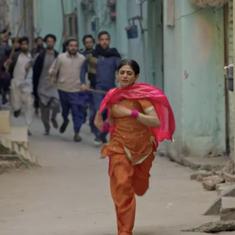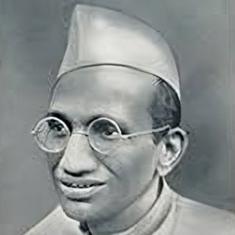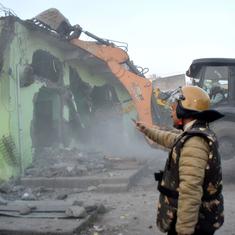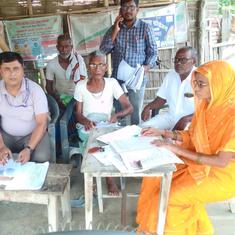Living in the shadow of glaciers and dams: A Himalayan ticking time-bomb
Two years ago, a glacial lake outburst flood swept away a dam and killed 57 people in Sikkim and West Bengal. Have any lessons been learnt from the disaster?
Chungthang is a small town located at an altitude of around 5,500 feet above sea level in Sikkim. Wooden homes line its streets and prayer flags flutter in the mountain breeze.
But the picturesque town is now eclipsed by an unmissable sight: a 60-metre-high hydropower dam, ripped apart at its centre. It stands as a reminder of the devastation caused by the deadly glacial lake outburst flood of 2023.
A GLOF occurs when a lake formed by glacial melt suddenly collapses or overflows – triggered by events like heavy rainfall, landslides, or earthquakes.
On October 3, 2023, the South Lhonak lake burst and the waters cascaded down, destroying one of India’s largest hydropower projects, the 1,200 megawatt Teesta III dam at Chungthang. As the dam’s debris swirled downstream in the Teesta river, the flood unleashed further destruction. At least 57 people were killed across Sikkim and West Bengal.
A year and half later, the government sanctioned the rebuilding of the Teesta III dam.
“If they build the dam again, there is no future for the people of Chungthang,” said Mayalmit Lepcha, general secretary of Affected Citizens of Teesta, a Sikkim-based movement that has been resisting dam construction for nearly two decades. The Teesta is dotted with nearly 10 large hydropower projects and locals blame these dams for amplifying the 2023 flood’s impact.
Scroll’s Vaishnavi Rathore and Kritika Pant travelled along the Teesta, meeting survivors of the 2023 flood, many of whom are still living in relief camps. In this report, supported by the Pultizer Center, they explore the question: Should India be building dams in a region vulnerable to glacial lake bursts?









